Editor’s note: This post is part of our weekly In the NVIDIA Studio series, which celebrates featured artists, offers creative tips and tricks, and demonstrates how NVIDIA Studio technology improves creative workflows. We’re also deep diving on new GeForce RTX 40 Series GPU features, technologies and resources, and how they dramatically accelerate content creation.
Artist Zhelong Xu, aka Uncle Light, brought to life Blood Moon — a 3D masterpiece combining imagination, craftsmanship and art styles from the Chinese Bronze Age — along with Kirin, a symbol of hope and good fortune, using NVIDIA technologies.
Also this week In the NVIDIA Studio, the #WinterArtChallenge is coming to a close. Enter by sharing winter-themed art on Instagram, Twitter or Facebook for a chance to be featured on NVIDIA Studio’s social media channels. Be sure to tag #WinterArtChallenge to join.
‘Tis the season!
Join us as we partner with @NVIDIAStudio on their #WinterArtChallenge.
Through the end of the year, share any winter themed art #MadeInOmniverse with us using #WinterArtChallenge!
by Edward McEvenue, created using #OmniverseCreate & @sketchfab. pic.twitter.com/pdRQ2eJRX1
— NVIDIA Omniverse (@nvidiaomniverse) November 16, 2022
Ring in the season and check out the NVIDIA RTX Winter World in Minecraft — now available in the NVIDIA Omniverse Launcher. Download today to use it in your #WinterArtChallenge scenes.
Tune in to NVIDIA’s special address at CES on Tuesday, Jan. 3, at 8 a.m. PT, when we’ll share the latest innovations made possible by accelerated computing and AI.
Dare to Dragon
Xu is a veteran digital artist who has worked at top game studio Tencent, made key contributions to the third season of Netflix’s Love, Death & Robots, and won ZBrush 2018 Sculpt of the Year award. He carries massive influence in the 3D community in China, and the country’s traditional culture is an inexhaustible treasure of inspiration for the artist.
“Ancient Chinese artisans have created countless unique, aesthetic systems over time that are completely different from Western art,” said Xu. “My dream is to use modern means to reinterpret Chinese culture and aesthetics as I understand them.”
Blood Moon is a tribute to the lost Shu civilization, which existed from 2,800 B.C. to 1,100 B.C. The work demonstrates the creative power of ancient China. During a trip to the Sanxingdui Museum in the Sichuan province, where many relics from this era are housed, Xu became inspired by the mysterious, ancient Shu civilization.
The artist spent around 10 minutes sketching in the Procreate app, looking to capture the general direction and soul of the piece. This conceptual stage is important so that the heart of the artwork doesn’t get lost once 3D is applied, Xu said.

He then began sculpting in Maxon’s ZBrush, which is his preferred tool as he says it contains the most convenient sculpting features.

Next, Xu used Adobe Substance 3D Painter to apply colors and textures directly to 3D models. NVIDIA RTX-accelerated light- and ambient-occlusion features baked and optimized scene assets in mere seconds, giving Xu the option to experiment with visual aesthetics quickly and easily.
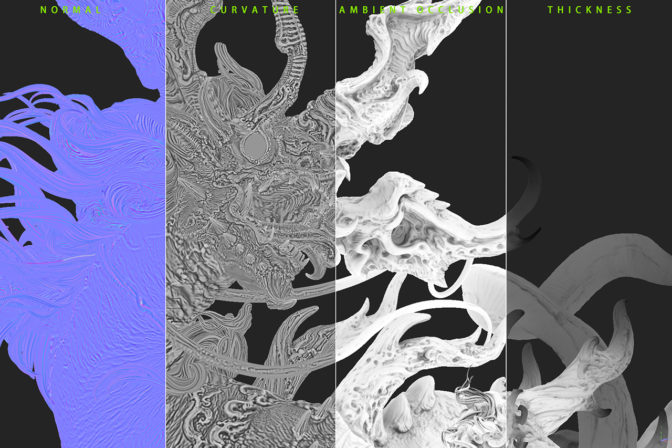
NVIDIA Iray technology in the viewport enabled Xu to edit interactively and use ray-traced baking for faster rendering speeds — all accelerated by his GeForce RTX 4090 GPU.
“The RTX 4090 GPU always gives me reliable performance and smooth interaction; plus, the Iray renderer delivers unbiased rendering,” Xu said.
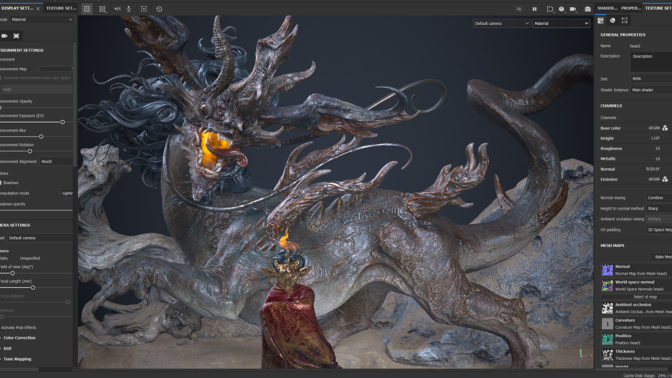
Xu used the Universal Scene Description file framework to export the scene from Blender into the Omniverse Create app, where he used the advanced RTX Renderer, with path tracing, global illumination, reflections and refractions, to create incredibly realistic visuals.

NVIDIA Omniverse — a platform for creating and operating metaverse applications — was incredibly useful for scene modifications, Xu said, as it enabled him to test lighting scenarios with his scene rendering in real time. This provided Xu with the most accurate iteration of final renders, allowing for more meaningful edits in the moment, he said.
Further edits included adding fog and volume effects, easily applied in Omniverse Create.
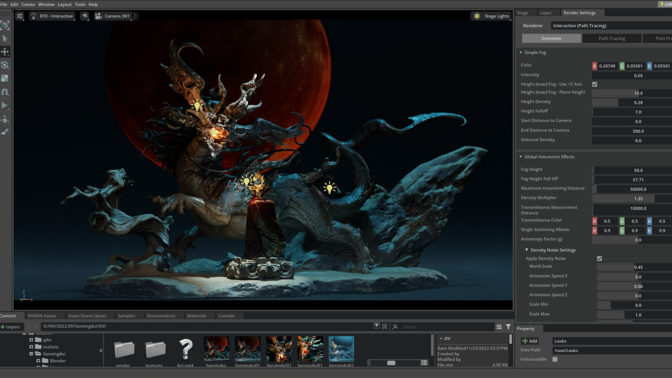
Omniverse gives 3D artists their choice of renderer within the viewport, with support for Pixar HD Storm, Chaos V-Ray, Maxon’s Redshift, OTOY Octane, Blender Cycles and more. Xu deployed the unbiased NVIDIA Iray renderer to complete the project.
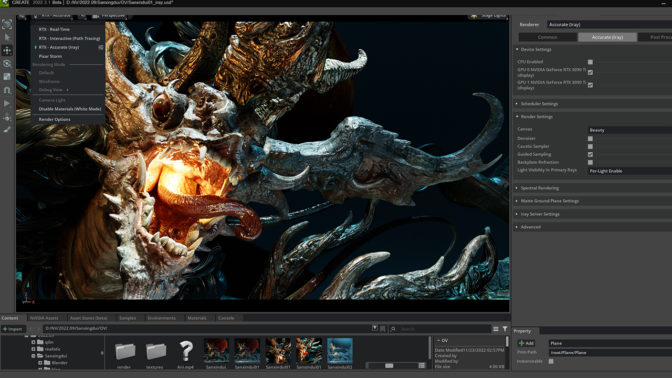
“Omniverse is already an indispensable part of my work,” Xu added.
The artist demonstrated this in another history-inspired piece, Kirin, built in Omniverse Create.

“Kirin, or Qilin, is always a symbol of hope and good fortune in China, but there are few realistic works in the traditional culture,” said Xu.
He wanted to create a Kirin, a legendary hooved creature in Chinese mythology, with a body structure in line with Western fine art and anatomy, as well as with a sense of peace and the wisdom of silence based on Chinese culture.
“It is not scary,” said Xu. “Instead, it is a creature of great power and majesty.”
Kirin is decorated with jade-like cloud patterns, symbolizing the intersection of tradition and modernity, something the artist wanted to express and explore. Clouds and fogs are difficult to depict in solid sculpture, though they are often carved in classical Chinese sculpture. These were easily brought to life in Xu’s 3D artwork.

Check out Zhelong Xu’s website for more inspirational artwork.
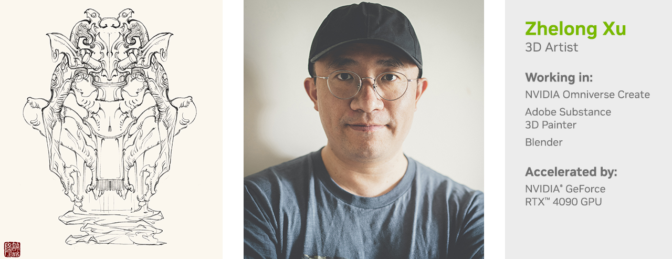
For the latest creative app updates, download the monthly NVIDIA Studio Driver.
Access tutorials on the Studio YouTube channel and get updates directly in your inbox by subscribing to the Studio newsletter.


